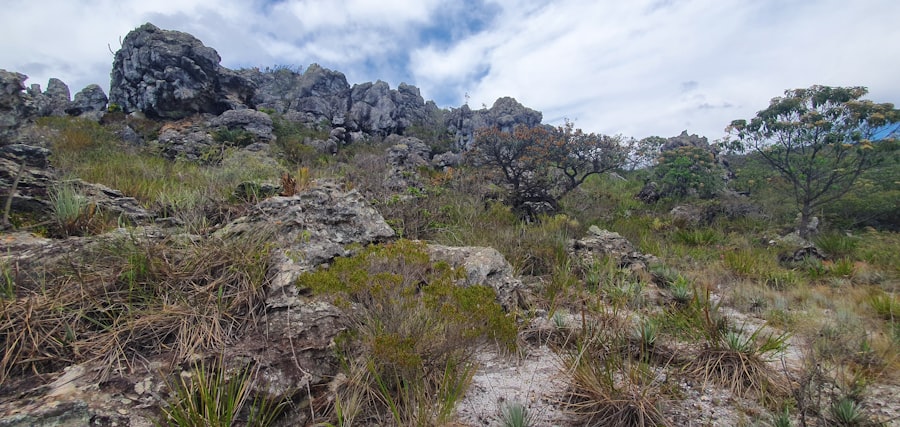North America, a vast continent characterized by its diverse landscapes and rich resources, holds a unique position in the global arena. Stretching from the Arctic tundra of Canada to the tropical beaches of Mexico, its geographical features range from towering mountain ranges to expansive plains and dense forests. This variety not only shapes the continent’s climate and ecosystems but also influences its economic and political dynamics.
The strategic geography of North America is further enhanced by its proximity to both the Atlantic and Pacific Oceans, providing vital maritime routes that facilitate international trade and cultural exchange. The continent is bordered by two major oceans, which serve as gateways to global markets. The Atlantic Ocean connects North America to Europe and Africa, while the Pacific Ocean links it to Asia and Oceania.
This geographical positioning has historically made North America a focal point for exploration, colonization, and trade. Additionally, the presence of significant waterways, such as the Great Lakes and the Mississippi River, enhances internal connectivity and supports economic activities. As a result, North America’s strategic geography is not merely a backdrop; it is a dynamic element that shapes the continent’s role in global affairs.
Key Takeaways
- North America’s strategic geography is defined by its position between the Atlantic and Pacific Oceans, making it a key player in global trade and security.
- The continent’s geopolitical importance is underscored by its economic power, military strength, and influence in international affairs.
- North America’s role in global trade is significant, with the United States, Canada, and Mexico being major players in international commerce and supply chains.
- The physical geography of North America, including its vast landmass, diverse climate, and natural resources, greatly influences its economic and strategic significance.
- North America’s position in the Arctic region has become increasingly important due to climate change and the potential for resource extraction and shipping routes.
North America’s Geopolitical Importance
The geopolitical significance of North America cannot be overstated. The continent is home to three major countries: the United States, Canada, and Mexico, each playing a crucial role in regional and global politics. The United States, as a superpower, exerts considerable influence on international relations, economics, and security policies.
Canada, with its stable political environment and abundant natural resources, complements this influence by fostering diplomatic relations and trade partnerships. Meanwhile, Mexico’s strategic location and growing economy make it an essential player in North American affairs.
The relationships among these three nations are governed by various treaties and agreements, such as the United States-Mexico-Canada Agreement (USMCA), which underscores their interconnectedness. This trilateral cooperation enhances North America’s geopolitical stability and economic resilience. Furthermore, the continent’s collective response to global challenges—such as climate change, migration, and security threats—demonstrates its importance in shaping international norms and policies.
As geopolitical tensions rise in other parts of the world, North America’s collaborative approach serves as a model for regional cooperation.
North America’s Role in Global Trade

North America stands as a critical hub for global trade, driven by its robust economies and extensive trade networks. The continent’s economic activities are characterized by a high degree of interdependence among its countries. The United States is one of the largest importers and exporters globally, with Canada and Mexico being its primary trading partners.
This trilateral trade relationship is facilitated by well-established supply chains that span various industries, including automotive, agriculture, technology, and energy. The implementation of trade agreements has further solidified North America’s position in global commerce. The USMCA, which replaced the North American Free Trade Agreement (NAFTA), aims to modernize trade practices and enhance economic cooperation among the three nations.
By reducing tariffs and promoting fair competition, these agreements have fostered an environment conducive to growth and innovation. Additionally, North America’s strategic location allows for efficient transportation of goods via land, air, and sea routes, making it an attractive destination for international businesses seeking to expand their reach.
The Influence of North America’s Physical Geography
| Physical Geography Factor | Influence |
|---|---|
| Mountain ranges | Impact on climate and weather patterns |
| Rivers and lakes | Provide water resources and transportation routes |
| Coastlines | Affect trade and economic activities |
| Climate zones | Determine vegetation and wildlife distribution |
The physical geography of North America plays a pivotal role in shaping its economic activities and cultural identity. The continent’s diverse landscapes—from the Rocky Mountains to the Great Plains—create distinct regional characteristics that influence everything from agriculture to tourism. For instance, the fertile soils of the Midwest support extensive farming operations, making it one of the world’s leading agricultural regions.
In contrast, the mountainous areas of the West offer opportunities for mining and outdoor recreation. Moreover, North America’s climate varies significantly across regions, impacting lifestyle choices and economic pursuits. The temperate climates of the northern states allow for diverse agricultural practices, while the warmer southern regions are conducive to year-round tourism and outdoor activities.
This geographical diversity not only enriches the continent’s cultural tapestry but also contributes to its economic resilience by allowing for a wide range of industries to thrive simultaneously.
North America’s Role in International Security
In an increasingly complex global security landscape, North America plays a vital role in maintaining peace and stability. The United States leads international security efforts through its military alliances and partnerships with other nations. Organizations such as NATO (North Atlantic Treaty Organization) exemplify this commitment to collective defense and security cooperation.
Canada also contributes significantly to international peacekeeping missions, reflecting its dedication to global stability. The continent’s geographical features further enhance its security posture. The vast distances between North America and potential adversaries provide a natural buffer against direct threats.
Additionally, the presence of advanced military infrastructure and technology enables rapid response capabilities in times of crisis. As global security challenges evolve—ranging from terrorism to cyber threats—North America’s collaborative approach to defense ensures that it remains a key player in safeguarding international peace.
The Impact of North America’s Natural Resources

North America is endowed with an abundance of natural resources that significantly contribute to its economic strength and global influence. The continent is rich in minerals, fossil fuels, timber, and freshwater resources, making it a vital player in various industries. The United States is one of the world’s largest producers of oil and natural gas, while Canada boasts vast reserves of minerals such as gold, copper, and lithium—essential for modern technologies.
The extraction and management of these resources have far-reaching implications for both domestic economies and international markets. For instance, North America’s energy production has positioned it as a key player in global energy markets, influencing prices and supply chains worldwide. Furthermore, sustainable management practices are increasingly being adopted to ensure that these resources are utilized responsibly while minimizing environmental impacts.
As global demand for natural resources continues to rise, North America’s wealth in this regard will remain a cornerstone of its economic power.
North America’s Strategic Position in the Arctic
The Arctic region has gained prominence in recent years due to climate change and shifting geopolitical dynamics. As ice melts and new shipping routes open up, North America’s strategic position in the Arctic becomes increasingly significant. The United States and Canada both possess Arctic territories that are rich in natural resources and hold potential for new trade routes connecting Asia to Europe.
North America must navigate complex territorial claims while balancing environmental concerns with economic opportunities. Collaborative efforts among Arctic nations are essential to ensure sustainable development while addressing security challenges posed by increased maritime activity.
As global interest in the Arctic intensifies, North America’s role will be crucial in shaping policies that govern this fragile ecosystem.
The Role of North America in Regional Alliances
North America’s influence extends beyond its borders through active participation in regional alliances that promote cooperation on various fronts. Organizations such as the Organization of American States (OAS) facilitate dialogue among countries in the Americas on issues ranging from democracy promotion to economic development. Through these alliances, North America fosters stability within its region while addressing shared challenges such as migration and drug trafficking.
Additionally, partnerships with countries outside the Americas further enhance North America’s strategic position on the global stage. Collaborations with nations in Europe and Asia through forums like APEC (Asia-Pacific Economic Cooperation) allow for dialogue on trade policies and security concerns. By engaging with diverse partners across different regions, North America strengthens its diplomatic ties while promoting mutual interests.
North America’s Influence on Global Energy Markets
As one of the world’s leading energy producers, North America wields considerable influence over global energy markets. The United States has emerged as a top producer of oil and natural gas due to advancements in extraction technologies such as hydraulic fracturing (fracking). This surge in production has not only transformed domestic energy dynamics but has also reshaped international energy trade patterns.
Canada’s vast oil sands reserves further contribute to this influence, positioning it as a key supplier for both U.S. markets and international buyers. As countries seek to diversify their energy sources amid concerns over climate change, North America’s role as a reliable energy provider becomes increasingly important.
The transition towards renewable energy sources also presents opportunities for collaboration between nations within the continent as they work towards sustainable energy solutions.
The Future of North America’s Strategic Importance
Looking ahead, North America’s strategic importance is poised to evolve in response to emerging global trends. Climate change will undoubtedly shape policies related to resource management and environmental sustainability across the continent. As nations grapple with the impacts of climate change—such as extreme weather events and rising sea levels—collaborative efforts will be essential for addressing these challenges effectively.
Technological advancements will also play a pivotal role in shaping North America’s future trajectory. Innovations in clean energy technologies present opportunities for economic growth while addressing environmental concerns. Furthermore, advancements in communication technologies will enhance connectivity among nations within the continent and beyond.
North America’s Continuing Role in Global Affairs
In conclusion, North America’s strategic geography positions it as a vital player in global affairs across multiple dimensions—geopolitical significance, trade dynamics, security cooperation, resource management, and environmental sustainability. The continent’s diverse landscapes contribute not only to its economic resilience but also to its cultural richness. As challenges arise on both regional and global scales—from geopolitical tensions to climate change—North America’s collaborative approach will be crucial in navigating these complexities.
By leveraging its strengths while fostering partnerships with other nations, North America can continue to play an influential role on the world stage for years to come.
The strategic geography of North America plays a crucial role in global geopolitics, influencing trade routes, military strategy, and international relations. An insightful article that delves into these aspects is available on MyGeoQuest, which provides a comprehensive overview of how geographical features such as mountain ranges, rivers, and coastlines impact strategic decisions. For a deeper understanding of these dynamics, you can explore the article by visiting this link. This resource offers valuable perspectives on how geography shapes the political and economic landscape of North America.
WATCH THIS! The Hidden Reason No One Can Invade America | A Geographical Analysis
FAQs
What is strategic geography?
Strategic geography refers to the study of the geographical factors that influence the strategic importance of a particular region or area. This can include factors such as natural resources, topography, proximity to key trade routes, and geopolitical considerations.
What is the strategic geography of North America?
The strategic geography of North America is influenced by its vast landmass, diverse natural resources, and its position between the Atlantic and Pacific Oceans. It is also characterized by its proximity to key global trade routes and its shared borders with Canada and Mexico.
How does the strategic geography of North America impact global geopolitics?
The strategic geography of North America has a significant impact on global geopolitics. Its position as a bridge between the Atlantic and Pacific Oceans makes it a key player in international trade and security. Additionally, its natural resources and large landmass contribute to its economic and military significance on the world stage.
What are some key strategic locations in North America?
Some key strategic locations in North America include the Panama Canal, which connects the Atlantic and Pacific Oceans, the Great Lakes, which are important for trade and transportation, and the US-Mexico border, which has significant implications for immigration and security.
How does the strategic geography of North America affect its relationships with neighboring countries?
The strategic geography of North America plays a crucial role in its relationships with neighboring countries. For example, the shared border with Mexico has implications for immigration, trade, and security, while the border with Canada influences trade, environmental cooperation, and defense partnerships.
